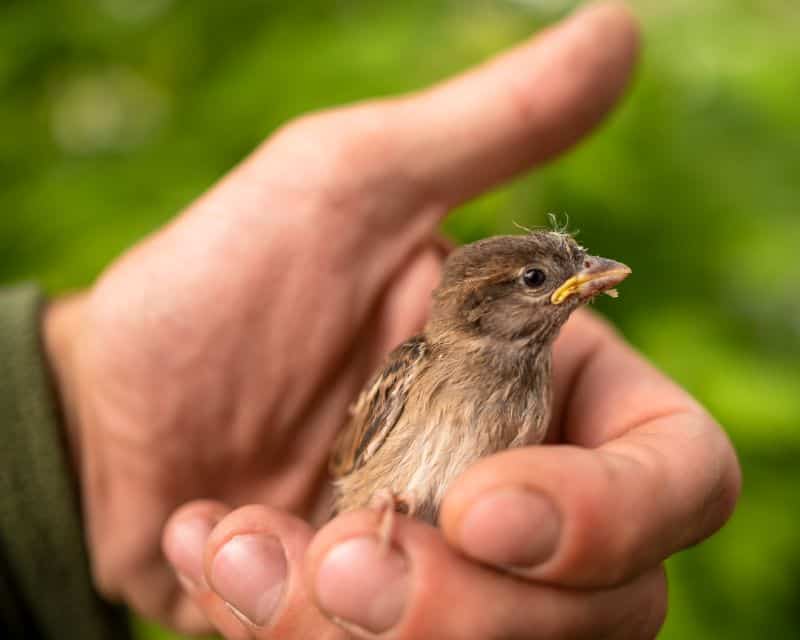I Found A Baby Wild Animal… Now What?

The first warm days, buds on the trees, and crocuses pushing up through the dirt are cause for celebration after a long Midwestern winter. While we may be opening up the windows, cleaning out the garage, or firing up the grill, many species of local wildlife herald the arrival of spring by, well, procreating.
Baby animals are pretty much all over the place this time of year, and it’s not uncommon to see one unaccompanied by its mother. Do you know what to do if you find a baby wild animal?
Small, but Wild
Every year, baby wildlife are scooped up by well meaning citizens who are understandably concerned for their welfare. Unfortunately, in the vast majority of cases these attempts to “rescue” a baby wild animal does more harm than good.
Many species of wildlife regularly leave their young during the day while they go off in search of food, such as deer, rabbits, raccoons, and skunks. Even baby songbirds that have fallen out of their nests are probably being cared for from afar by their parents.
When Your Help is Needed
Although most baby animals in the wild should be left alone, there are certain times when human intervention is needed. Signs that a baby wild animal needs your help include:
- The animal is bleeding, has a broken limb or wing, or other obvious injury.
- A dog or cat has brought you the baby animal.
- The animal is shivering.
- A bird is featherless or nearly featherless.
- There’s a dead parent nearby.
- The animal is in obvious distress (wandering around all day, crying/vocalizing).
- The baby is an opossum or a waterfowl (goose, duck, etc.), as these are usually under direct supervision of their mothers.
The Next Steps
If you’ve determined that the baby animal you’ve found needs help, please contact a wildlife rehabilitation/rescue center for instructions on how to proceed. Never handle an animal before you’ve been advised on proper technique – even baby animals can hurt you or transmit disease.
While you wait for help to arrive, there are certain steps you can take to make the animal more comfortable and prepare them for transport:
- Put on thick gloves and cover the animal with a towel before placing them in a safe container, such as a pet carrier or cardboard box with holes cut in the top. Make sure the container is lined with a clean, soft towel or t-shirt.
- Place the container in a warm, dark, quiet place. Make sure it is out of direct sunlight and away from the heater.
- Don’t attempt to give the animal food or water – baby animals can aspirate water into their lungs or choke on food.
- If you are transporting the animal yourself, enlist the help of another person to keep the box still while driving. Don’t play the radio and keep talking to a minimum to reduce the animal’s stress and give them the best chance of survival.
If you have further questions, please don’t hesitate to contact the team at Beverly Hills Veterinary Associates.
